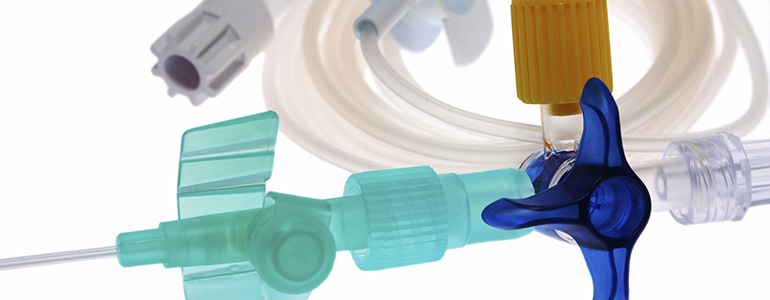Not all rubber is made equal!

05 Jul 2016
A discussion on risk assessments of leachables from medical device components
When a medical device (e.g., inhaler, syringe, pump) is used to administer medications, the patient could be exposed to unintended substances called leachables.
It is a regulatory requirement that leachables from medical devices be identified by conducting extractables/leachables (E/L) testing and assessed for potential health risks. In the past, before this risk was fully appreciated, some patients were being exposed to hazardous substances such as rubber vulcanizing by-products which are now known to be sensitizers or carcinogens. The substitution of rubbers formulated using different curing agents and different additives has eliminated these particular substances; however, there are many other materials used in medical devices (e.g., plastics, metals, coatings, inks), and a large number of associated leachables.
It is not possible or practical to identify every possible substance observed from extractable testing; hence, a logical "threshold" of exposure can be defined, below which there would be no appreciable risk of adverse effects to humans regardless of the identity of the substance. The next complication is to clarify the relationship between the human threshold, which is measured typically in microgram quantities per day and the E/L testing results which are presented in units of concentration. This relationship needs to be determined up front. A number of standard-setting groups, including the Product Quality Research Institute (PQRI), United States Pharmacopeia (USP), and the International Organization for Standardization (ISO) have already established some practical thresholds for various types of products that can be used to help with this process. For example, for leachables from Orally Inhaled & Nasal Drug Products (OINDP), the PQRI has recommended a safety concern threshold (SCT) of 0.15 µg/day relevant to potentially genotoxic leachables. Higher thresholds can be supported for device components that are not as high risk for the formation of leachables, and for leachables that are not genotoxic. Also, the length of time that a device needs to be used will be factored into determining a practical threshold for identifying substances for additional evaluation. Leachable exposures that exceed the relevant threshold may need to be evaluated in a comprehensive risk assessment.
Ultimately, it should be understood that the purpose of conducting E/L testing should not be to find and identify as many substances as possible that could be extracted out of device components. Rather, it should be to ensure that drug delivery systems/medical device components/pharmaceutical packaging materials are not exposing a patient to leachables in high enough quantities to cause harm under the intended conditions of use of the drug product or device.
Thus, rather than rushing to complete as many extraction tests as possible, are you giving some upfront thought to ensuring the tests that are completed, and the results that are generated, will be practical and needed? Please feel free to access our webinar to learn more about "Safety Assessments for Extractables & Leachables".
